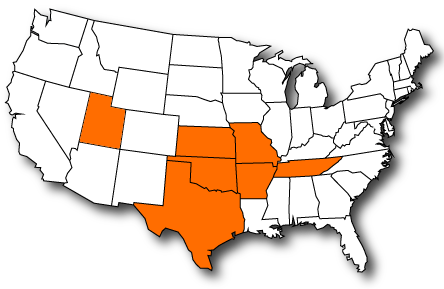Life insurance is important for financial security and peace of mind for individuals and their families. In Utah and the rest of the US, there are two main types of life insurance.
These types are term life insurance and whole life insurance. It’s important to understand the differences between these two types of policies. This will help you make a decision that aligns with your financial goals and needs.
This essay will discuss the features, advantages, disadvantages, and appropriateness of term and whole life insurance for Utah residents.

Term Life Insurance
Characteristics
Term life insurance provides coverage for a set period, usually 10 to 30 years. If the insured person passes away during this time, their beneficiaries receive a lump sum payment. If the insured person lives past the term, the policy ends with no payout.
Benefits
- Affordability: Term life insurance is generally more affordable than whole life insurance. Premiums are lower because the policy only provides coverage for a limited period and does not accumulate cash value.
- Simplicity: Term life insurance policies are straightforward to understand. This policy offers simple life insurance coverage without complex investment components or cash value accumulation.
- Flexibility: Term life insurance offers flexibility in terms of the length of coverage. Policyholders can choose a term that aligns with specific needs, like mortgage duration or until children are financially independent.
- High Coverage Amounts: Due to its lower cost, policyholders can often afford higher coverage amounts compared to whole life insurance. This can provide significant financial protection for beneficiaries in the event of the insured’s death.
Drawbacks
- Temporary Coverage: The main drawback of term life insurance is that it only provides coverage for a limited period. If the policyholder outlives the term, they will need to buy a new policy with potentially higher premiums.
- No Cash Value: Term life insurance does not accumulate cash value. This means that there is no investment component or savings aspect to the policy. Once the term expires, the policyholder does not receive any return on their premiums.
- Increasing Premiums: Initial term life insurance premiums are lower but can increase significantly upon renewal after the original term expires. This can make it less affordable in the long term.
Suitability
Term life insurance is particularly suitable for individuals in Utah who need affordable coverage for a specific period. This may apply to young families, individuals with significant debt, or those wanting financial protection during critical years.
Whole Life Insurance
Characteristics
Whole life insurance, also known as permanent life insurance, covers the insured’s entire lifetime, as long as premiums are paid. In addition to the death benefit, whole life insurance includes a cash value component that grows over time on a tax-deferred basis.
Benefits
- Lifetime Coverage: Whole life insurance offers lifetime coverage, ensuring that beneficiaries will receive a death benefit regardless of when the insured person dies, as long as premiums are maintained.
- Cash Value Accumulation: A portion of the premiums paid into a whole life insurance policy goes towards building cash value. This cash value grows over time and can be borrowed against or withdrawn by the policyholder, providing a financial resource for emergencies or other needs.
- Fixed Premiums: Whole life insurance policies typically have fixed premiums that do not increase over time. This provides predictability and helps with long-term financial planning.
- Dividends: Some whole life insurance policies pay dividends to policyholders. These dividends can be used to reduce premiums, purchase additional coverage, or be received as cash.
Drawbacks
- Higher Cost: Whole life insurance is significantly more expensive than term life insurance. The higher premiums can be a financial burden for some individuals, especially when compared to the more affordable term life policies.
- Complexity: Whole life insurance policies are more complex due to their investment component and cash value accumulation. Understanding the policy details and managing the cash value aspect requires more financial knowledge and oversight.
- Lower Initial Coverage: Due to the higher premiums, policyholders may have to settle for lower coverage amounts compared to what they could afford with a term life insurance policy. This could be a disadvantage if a higher death benefit is needed.
Suitability
Whole life insurance is suitable for individuals in Utah who are looking for lifelong coverage and are interested in the cash value component as a long-term financial planning tool. It may appeal to those who have maxed out other retirement savings options and are seeking additional ways to grow their wealth on a tax-deferred basis.

Comparing Term and Whole Life Insurance in Utah
Financial Goals and Needs
When choosing between term and whole life insurance, it is essential to consider one’s financial goals and needs. Term life insurance is ideal for those seeking affordable, temporary coverage to protect against specific financial obligations, such as a mortgage or raising children. Whole life insurance, on the other hand, is better suited for those looking for lifelong coverage and interested in the policy’s investment component.
Budget Considerations
Budget is a critical factor in the decision-making process. Term life insurance is much more affordable and allows for higher coverage amounts at a lower cost. This makes it an attractive option for young families or individuals with limited financial resources.
Whole life insurance, with its higher premiums, may be more suitable for individuals with higher disposable income who can afford the cost and value the additional benefits of cash value accumulation.
Long-Term Financial Planning
For long-term financial planning, whole life insurance offers benefits that term life insurance does not, such as cash value accumulation and potential dividends. These features can provide additional financial security and serve as a supplemental retirement savings tool. However, this comes at a higher cost, and policyholders must be willing to commit to the higher premiums.
Health and Age Considerations
Health and age are also important factors to consider. Term life insurance may be more advantageous for younger individuals who are in good health and can lock in low premiums for a specific term.
As individuals age, renewing a term policy can become more expensive and challenging because of potential health issues.
Whole life insurance provides the advantage of lifelong coverage, making it a viable option for those seeking coverage regardless of changes in health over time.
Estate Planning
For estate planning, whole life insurance can be an effective tool. The death benefit can provide liquidity to pay estate taxes and other expenses, ensuring that heirs receive the maximum value from the estate. The cash value component can also be used strategically as part of an estate planning strategy.
Regulatory Environment in Utah
Utah’s regulatory environment for life insurance is overseen by the Utah Insurance Department. The department ensures that life insurance companies operate within the state’s laws and regulations, providing consumer protection and maintaining the integrity of the insurance market.
Utah residents can access resources and information from the Utah Insurance Department to help them make informed decisions about their life insurance options.
Conclusion
Choosing between term life insurance and whole life insurance in Utah involves careful consideration of various factors, including financial goals, budget, long-term planning, health, and age. Term life insurance offers affordable, straightforward coverage for a specific period, making it suitable for those with temporary financial obligations.
Whole life insurance, with its higher premiums and cash value component, provides lifelong coverage and serves as a financial planning tool.
Ultimately, the decision between term and whole life insurance depends on individual circumstances and priorities. Utah residents should assess their financial situation, future needs, and preferences to determine the best type of life insurance policy for their unique situation.
Consulting with our financial advisor or insurance professional at G&G Independent Insurance can provide valuable insights and help make an informed choice. Get a free quote today!


